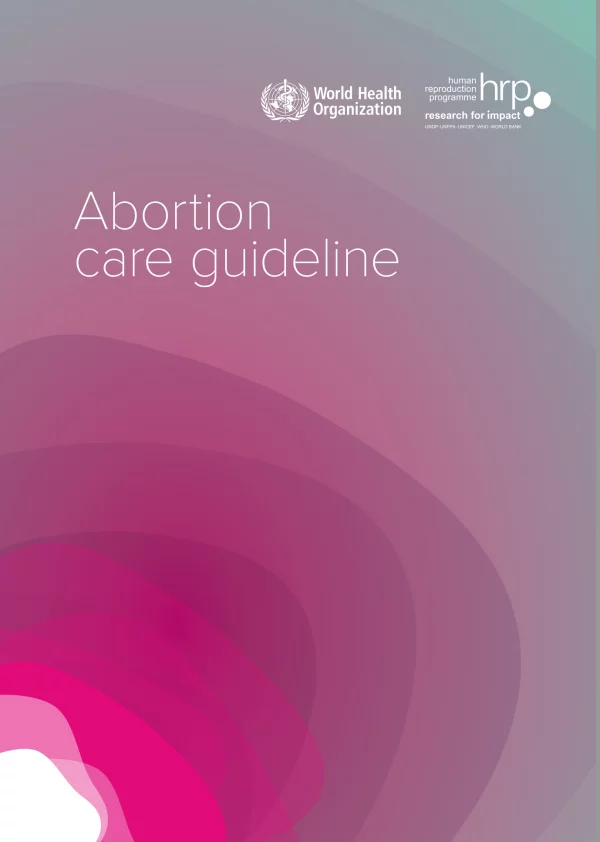
May 12, 2022 11:46
November 25, 2022 13:56
Abortion Care Guideline
Geneva: World Health Organization; 2022. ISBN-13: 978-92-4-003948-3ISBN-13: 978-92-4-003949-0
Sexual and Reproductive Health is fundamental to individuals, couples, and families, and communities’ and nations’ social and economic development. As provided in the Constitution of the World Health Organization (WHO), the organization’s objective is “the attainment by all peoples of the highest possible level of health,” To fulfill that objective, WHO’s functions include providing technical assistance to countries in the field of Health. Universal access to sexual and reproductive Health (SRH) information and services are central to both individual and community health, as well as the realization of human rights.
In the wake of the COVID-19 pandemic and based on lessons learned from previous disease outbreaks – when SRH services have been severely disrupted, causing individuals to feel disempowered and be exposed to preventable health risks – WHO has included comprehensive abortion care in the list of essential health services in certain recent technical publications.
Comprehensive abortion care includes providing information, abortion management (including induced abortion and maintenance related to pregnancy loss/spontaneous abortion, and post-abortion care. Strengthening access to comprehensive abortion care within the health system is fundamental to meeting the sustainable development Goals (SDGs) relating to good Health and well-being (SDG3) and gender equality (SDG5). WHO’sGlobal Reproductive Health Strategy, which seeks to accelerate progress towards the achievement of international development goals, identifies the elimination of unsafe abortion two as a priority mandate. The United Nations Global Strategy similarly underscores the importance of quality abortion care to Health for Women, Children, and adolescents Health, which includes evidence-based interventions for abortion and post-abortion care as one effective way to help individuals thrive and communities transform.
Quality of abortion care is foundational to this abortion care guideline. Quality of care (see Glossary) encompasses multiple components. It is defined as care that is: effective, efficient, accessible, acceptable/patient-centered, equitable, and safe. Effective care includes the delivery of evidence-based care that improves the Health of individuals and communities and is responsive to their needs. Efficient care optimizes resource use and minimizes waste.
Quality abortion care must also be both accessible (timely, affordable, geographically reachable, and provided in a setting where skills and resources are appropriate to medical needs) and acceptable (incorporating the preferences and values of individual service users and the cultures of their communities). In addition, it is imperative that access to abortion care is equitable and that the quality of care does not vary based on the personal characteristics of the person seeking care, such as their gender, race, religion, ethnicity, socioeconomic status, education, if they are living with a disability, or based on their geographic location within a country. And finally, quality abortion care implies that it is safely delivered and minimizes any risks and harms to service users.
All documents of the World Health Organization
Resource: https://www.ncbi.nlm.nih.gov/books/NBK578942/

 Français
Français